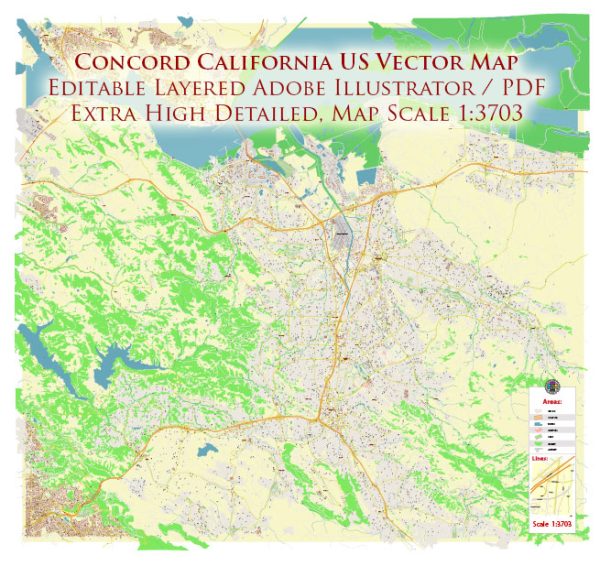Concord, California, has a rich history of urban development that reflects broader trends in the United States. The city’s development can be traced through various phases, from its early agricultural roots to its growth as a suburban community.
- Early Settlement and Agriculture (1800s): The area that is now Concord was initially inhabited by Native American tribes. The arrival of European settlers in the mid-19th century led to the establishment of farms and ranches, with agriculture becoming a significant economic activity. The completion of the transcontinental railroad in the late 1800s facilitated the transportation of goods and contributed to the area’s development.
- Industrialization and Growth (Early to Mid-20th Century): With the advent of the 20th century, Concord experienced industrialization and diversification. The city’s strategic location near San Francisco and its access to transportation routes, including the railroad and later highways, contributed to its economic growth. During World War II, the Concord Naval Weapons Station played a crucial role in supporting the war effort.
- Post-World War II Suburban Expansion (1950s-1970s): Like many other cities in the United States, Concord experienced a significant population boom in the post-World War II era. The GI Bill and increased automobile ownership fueled suburbanization, and Concord transformed from a predominantly agricultural area to a suburban community. The construction of housing developments and shopping centers, such as the Sunvalley Shopping Center, marked this period.
- Population Growth and Infrastructure Development (1980s-2000s): Concord continued to grow in the late 20th century, attracting residents seeking a suburban lifestyle while still having proximity to job opportunities in the San Francisco Bay Area. The city invested in infrastructure, including schools, parks, and transportation networks, to accommodate the expanding population. Highways such as Interstate 680 and State Route 242 became essential for commuting.
- Diversification of Economy and Urban Renewal (Late 20th Century-21st Century): As the economy evolved, Concord diversified its economic base beyond agriculture and industry. The city promoted commercial and retail development, fostering a more balanced economic landscape. Urban renewal projects aimed at revitalizing downtown areas and creating community spaces contributed to the city’s modern character.
- Environmental and Sustainability Initiatives (21st Century): In the 21st century, Concord, like many cities, has placed an increased emphasis on sustainability and environmental initiatives. Efforts have been made to promote green spaces, improve public transportation, and implement eco-friendly practices to address the challenges of urbanization.
Concord’s history of urban development reflects larger trends in American history, from westward expansion and industrialization to suburbanization and the challenges of modern urban planning. The city continues to evolve, responding to the changing needs and priorities of its residents.


 Author: Kirill Shrayber, Ph.D.
Author: Kirill Shrayber, Ph.D.